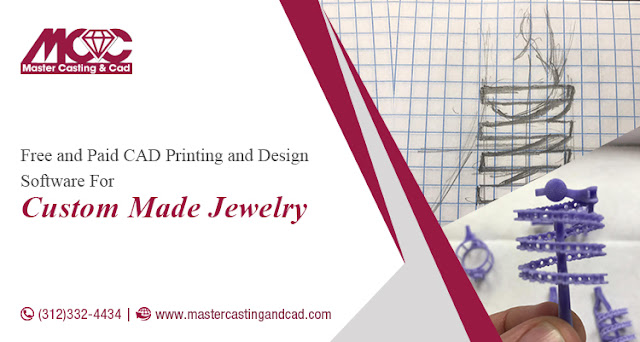Creating a 3D Model? Here are The 5 Mistakes that You Must Avoid For 3D Printing
3D Printing technology, as we know, is quite common when it comes to the casting of jewelries. But sometimes, modeling using 3D printing can be somewhat confusing as no one size fits all approach. As a consequence, not just different software, but different materials, different printers, and different printing technologies are used for different approaches. It seems creating a perfect 3D model is difficult using 3D printing.
Not as such. In fact, if you avoid the mistakes of using 3D printing, you can easily create a perfect 3D model for your custom made jewelry .You can also rely on experts like Master Casting & Cad or others for this.
1. Avoid Material Guidelines: As said earlier, for different 3D models, different material is required with different software. For example, it can be brittle, strong, flexible, solid, smooth, rough, heavy, or light. And based on the model to be created, a material is chosen. Suppose, when you are building a custom made jewelry, a soft or heavy metal is chosen. Hence, there is a specific recommendation for specific material-related design.
The choice is absolutely based on the person who is about to create the model. Now, every material design has its own guidelines. Instead of the guidelines, you must stick to the rules of the material that you are about to design. Following the guidelines will help you to create the most successful print for your model.
2. Ignore Printing Technology: Materials that include ABS, Polyamide, or Alumide, can print interlocking parts. Whereas, this is not possible when it comes to Gold, Silver, Bronze, or Resin. This is because of the technology that is used for printing all these materials.
As a result, for ABS, Fused Deposition Modeling with an extra nozzle is used and it is the same for others as well. While for precious metals like Gold, Silver and so on, lost wax casting based on 3D printing in wax and mold is used.
This might be confusing but the important thing is that we cannot assume even if both stainless steel and silver are metals they are cast using the same technology. Different materials use different technologies and hence, their design features differ from each other. However, if it is about the materials that use the same technology such as Gold, Silver, Bronze, and Brass share similar design requirements.
3. Ignoring Wall Thickness: Going through the guidelines you may find information about the wall thickness. Here we have penned down the problems linked to it. In some cases, wall thickness is made very thin to make small parts of the model. With these models, it is impossible to make print outs, as they would either fragile or break off easily.
What is the solution? Read about the perfect wall thickness for your 3D model and then head over to the design guide for the material of your choice.
4. Avoid File Resolution: For 3D CAD Printing and Design, the most common file format is STL. This particular file resolution converts your design into triangles in a 3D space. There are several modeling software that allows the user to export your designs to an STL file and set the required resolution. Therefore, while exporting the file, it is important to define the exact tolerance for the export. This tolerance is the maximum distance between the original shape and the STL mesh you are exporting.
5. Avoid Software Guidelines: Different technologies use different software to create amazing models. Some are designed to create 3D prints while others are used by 3D artists. These designs basically need additional editing before they create a final model. For example, some programs allow the user to apply automatic wall thickness while some look for manual setting. Hence, depending on what software you are using, you have to be careful while setting the features.
Have you met these mistakes while you are creating custom made jewelry? If yes, you must avoid them to create the best. The above-mentioned list of mistakes turns a 3D model into an accurate, enticing, and perfect 3D print.




Comments
Post a Comment